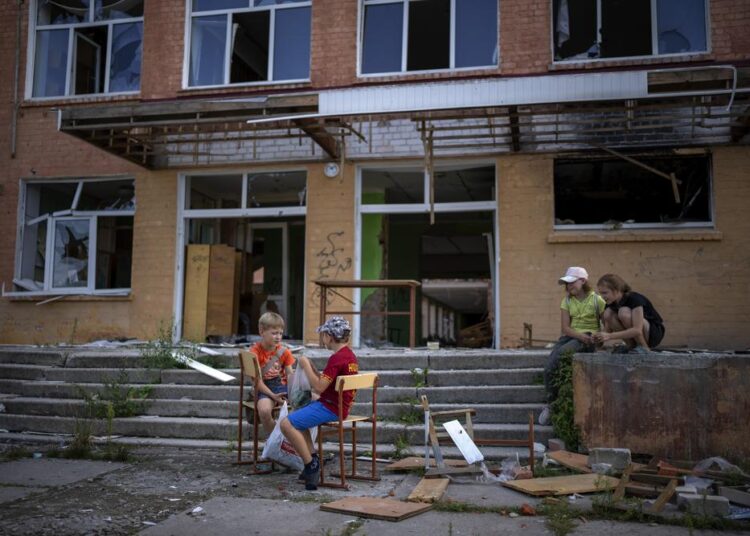MYKHAILO-KOTSYUBYNSKE, Ukraine — The first day of school in Ukraine on Thursday won’t include children sharing memories of fun vacations with their families. Their stories are of surviving war. For many, their last day of school was the day before the February 24 Russian attack on their country, according to AP.
At least 379 children have been killed since the war began, while the whereabouts of 223 others are unknown, according to Ukraine’s General Prosecutors office. Another 7,013 children were among Ukrainians forcibly transferred to Russia from Russian-occupied areas.
Some children were forced to flee their hometowns to avoid bombardment, some spent weeks in basements. And while those in so-called “safe” regions sometimes managed to study online, classes were frequently interrupted by air raid sirens. Six months of war damaged 2,400 schools across the country, including 269 that were destroyed, according to Ukrainian officials.
“It does become kind of the new normal for children, which I think, as I said, (is) very concerning as well because that’s not the way children should go through life, thinking that they are going to get attacked at any moment,” UNICEF Executive Director Catherine M. Russell, told AP.
Civilian areas and schools continue to be hit, and children keep being killed. But after the first months of shock, 51 per cent of schools in Ukraine, despite the risk, are reopening to in-person education, with an option to study online if the parents prefer.
Russell said she’d never before seen schools functioning entirely underground to protect students.
“You know, usually you have windows, you can see outside. These kids don’t have that luxury and they are just, they are becoming accustomed to that lifestyle of having to be sheltered from possible attack and that’s not, that’s not what any child should have to face,” she said.
But the safety of children remains the priority. Schools that don’t have quick access to shelters or are located close to the borders with Belarus and Russia, or near active military zones will only have online study.
That’s the case for the 7th graders in Mykhailo-Kotsyubynske, just 20 miles (35 kilometres) from the Belarus border, who gathered at their badly damaged school on Tuesday to pick up textbooks for studying online. While waiting, they played a version of “Truth or Lie,” where players tried to guess whether their opponent’s assertion about the number of missiles they saw from their window was true or false.
“We haven’t seen each other for such a long time. You all have grown so much,” said their teacher, Olena Serdiuk, standing in a corner of the classroom, where windows were covered with thick black polythene instead of glass.
Oleksii Lytvyn, 13, remembers very well the day Russian missiles hit the school twice. It was March 4, and he was in the school’s bomb shelter with his family and dozens of other people.
Just minutes before the blast, he had been playing with a friend. After the loud explosion, the walls began shaking and he couldn’t see anything but a huge cloud of dust. One person was killed, a woman who worked at the school.
“We were sleeping in the corridor, and there was a corpse of a dead person behind the wall,” Oleksii recalled. His family stayed one more night before fleeing town, though they have since returned for the start of the school year.
Oleksii’s classmates shared similar stories about that day and the monthlong Russian occupation of Mykhailo-Kotsyubynske that followed.






Discussion about this post